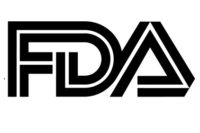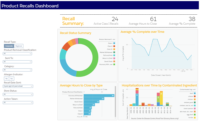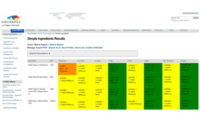The Food Safety Modernization Act (FSMA) is bringing expanded regulations across the industry at every step of the chain, from growers to processors to transportation. Some organizations are well-prepared for these changes, while others are rushing to catch up and become compliant.
No matter where your organization’s facilities and supply chain stand on FSMA compliance, it is imperative to understand the risks, develop a documented plan and encourage food safety and sanitation buy-in at all levels of the organization.
With FSMA implementation comes increased scrutiny and oversight. As the FDA and agriculture state departments conduct inspections, they will expect companies to be following the new rules. If inspectors find a facility not compliant, it could result in product recalls and a shutdown of operations.
For serious foodborne illness outbreaks involving injury or death, the Department of Justice and the FDA have begun to conduct joint investigations and may file criminal charges if evidence shows that companies are knowingly producing or handling food in an unsafe manner. There is a lot at stake, which is why food safety and sanitary design must be a priority for any company involved in food processing.
Listeria – the biggest risk for refrigerated and frozen foods
If you consider the three most common bacterial foodborne pathogens—E. coli, Salmonella, and Listeria—it is Listeria that poses the greatest safety risk to the refrigerated and frozen foods industry. The primary reason is because it can thrive in cold, wet environments, and with certain products, there is no lethality step such as cooking, between the producer and consumers plate.
E. coli and Salmonella don’t typically grow in refrigerated temperatures. They are transient pathogens that usually come into a facility on raw materials, causing contamination for that production day and leaving with the product. These pathogens are also likely to be killed during the sanitation process.
Residing in difficult-to-clean harborage areas, Listeria is a stubborn pathogen that can persist in the right setting for a long time. That’s why sanitary design is critical; both the plant and processing equipment must be readily cleanable and made of materials that can withstand the harsh sanitation chemicals.
The preferences of today’s consumers contribute to the Listeria risk. Foods that have been produced the same way for years now pose safety risks. For example, consumers are starting to consume frozen vegetables, such as peas or corn, raw, perhaps on a salad or in homemade salsa. That increases the risk of illness since there is no cooking step to kill bacteria.
To mitigate risks, implement a “seek-and-destroy” system for Listeria. Create an environmental monitoring program in your facility, so that the sanitation staff is actively looking for places where Listeria can hide and take appropriate steps to eliminate from the facility.
FSMA compliance – where to start?
For a number of FSMA rules, compliance dates have already come and gone. If an operation still needs to ensure its compliance, the first step is looking at products and processes to determine which of the specific rules apply. At a minimum, most refrigerated and frozen food processors will need to follow the Preventive Controls and Sanitary Transportation rules.
In terms of the Sanitary Transportation rule, food processors need to work with carriers to ensure appropriate cleaning of refrigerated trucks and that the right temperature is maintained during shipping.
For the Preventive Controls rule, someone in your facility should receive training and become a Preventive Controls Qualified Individual (PCQI), or you could bring on a PCQI consultant. Either way, you will need someone who is certified and can communicate with management and staff to develop and implement a food safety plan based on the facility’s products and associated risks.
Producing a safe food product in a FSMA-compliant environment requires a commitment from all levels and all departments. Begin making this plan by asking the right questions. How sanitary is your facility? Is your organization able to produce food in a sanitary environment? Do you have adequate resources and tools, including cleaning products, labor and time invested in food safety? Are you using appropriate solutions to wash food products and validated cooking processes if applicable? Is packaging designed to keep food safe? Are there mechanisms in place to make sure refrigerated temperatures are maintained?
Another good starting point is to assess the sanitary design level of your facility. These principles developed by the North American Meat Institute (NAMI), Washington, D.C., can act as a guide in creating a sanitary processing environment.
- Cleanable to microbiological level.
- Made of compatible materials.
- Accessible for inspection, maintenance and sanitation.
- Free of product or liquid collection.
- Hollows areas are hermetically sealed.
- Contains no niches.
- Sanitary operational performance.
- Hygienic design of maintenance enclosures.
- Hygienic compatibility with other systems.
- Validate cleaning and sanitizing protocols.
Make sure your food safety plan remains current, and is reviewed annually or whenever processes or equipment changes. When a facility inspection does occur, documentation will be of utmost importance. The FDA will request supporting documents regarding records of cleaning, sanitation, temperature and other processes. Those records should be well-organized, detailed, easily accessible and up-to-date. In the inspector’s eyes, if it wasn’t documented, it didn’t happen.
Refrigerated and frozen food processors should make use of all the resources available to assist in understanding and achieving FSMA compliance. Look for advice from your suppliers, vendors and trade organizations. Be open to sharing knowledge and best practices with peers – and even your competitors – because food safety is not a competitive advantage—it is a public health issue. And, a recall at any facility can impact public trust in all food products.










